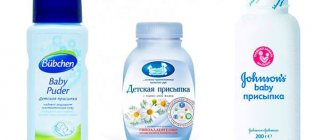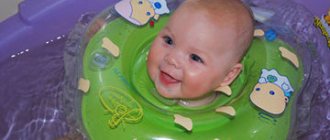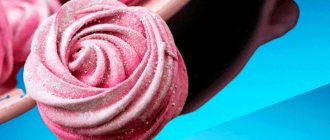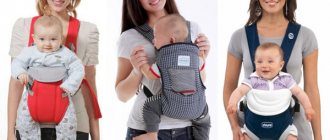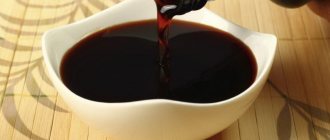The sippy cup is a convenient and multifunctional sippy cup. With its help, the baby learns to drink from a mug like an adult when it is time for complementary feeding. The baby learns to coordinate the movements of his hands and correctly bring the mug to his mouth. The sippy cup occupies an intermediate state between a bottle with a nipple and ordinary adult utensils.
How to teach a child to drink from a mug?
The most appropriate time comes after the first six months of life. By 5-6 months, the baby develops motor skills, he begins to grab objects and pull them into his mouth. At the same time, it is time for complementary feeding. In the intervals between meals: purees and cereals, the baby can be given water and juice. Most pediatricians indicate the period: from 7 months to 1 year. It is at this moment that it is worth introducing your baby to a sippy cup, which will not only teach him to drink on his own, but will also become an entertaining toy and teether. Children love to imitate adults, and the baby will be happy to imagine that he is drinking from a cup like mom and dad. After the child gets used to the sippy cup, you can offer him a regular mug.
The peculiarity of the sippy cup is that it is equipped with a special valve inside the spout, which prevents water from flowing out of the mug. In order for the liquid to enter the baby's mouth, he needs to pull water from the spout with sucking movements, which eliminates the possibility of suffocation. The process itself is reminiscent of drinking from a regular bottle without a nipple.
Mastering the skill of drinking from a straw
When your baby masters the skills of drinking from a bottle, sippy cup and cup, you may be puzzled by how to teach your child to drink from a straw. The optimal time for this is considered to be 9-10 months. This skill will be useful for your baby when introducing him to baby juices, drinks, and milkshakes, which are sold in boxes. For ease of use, many manufacturers supply drink boxes with special straws that simplify the drinking process.
Children who, by the age of 9-10 months, confidently drink from a sippy cup or sippy cup, intuitively learn to “pull” liquid from a straw.
In some cases, children may experience difficulties and misunderstanding when faced with a box and a tube. Therefore, for parents of children who cannot master drinking from a straw, the following advice will not be superfluous:
- first, show your baby the box of drink without opening it;
- allow your child to carefully examine the box of juice, turn it in his hands, touch it, otherwise he will begin to get acquainted with it when you open the package;
- do the same with the tube, let the baby study it, insert the tube into the baby’s mouth;
- then open the package with the drink in the right place, place the straw in a special hole, demonstrate the drinking process to the child;
- invite the baby to drink from a straw (in many cases, children instinctively begin to make sucking movements, thus absorbing the liquid);
- if the baby does not immediately understand the principle of this method of drinking, lightly press the box so that the juice begins to flow into the baby’s mouth (thanks to this, the child will be able to understand what is stored in the mysterious box);
- if after all the above steps the baby does not want or cannot drink from a straw, do not rush to make hasty conclusions and refuse to use the boxes; suggest a similar method of quenching thirst a little later, when the baby is ready to master this skill.
When introducing a child to various drinking methods, it is important for parents to remember that learning is faster and more successful when the following nuances are taken into account:
- a visual demonstration of all actions (parents must demonstrate to the child what they want to teach him);
- calmness and patience are important components of the success of any training;
- faith that the child will succeed (if not immediately, then a little later).
Types of sippy cups
The main material for making sippy cups is polymers, but it is also possible to manufacture individual parts from glass. All models are equipped with one or two handles. A sippy cup consists of three main combining elements: a plastic or glass bottle, a screw-on or slam-shut lid with various attachments in the form of a nipple or spout with holes and handles . All parts are disassembled and easy to clean. Therefore, at first, a sippy cup may look like a bottle with a nipple, then like an educational sippy cup, and then like an ordinary children's mug. The handles of some models are removable, but it is still advisable not to remove them, since it is much more convenient for the baby to hold on to both handles.
Let us briefly list the main types of sippy cups:
- Sippy cup with silicone spout. It is very reminiscent of a nipple on a bottle, babies are happy to try it out, so it is perfect for little ones - aged 5 months and older.
- Training cup with hard plastic nose. This model is for slightly older babies - from 7 months.
- Thermal sippy cups are perfect for traveling and long walks due to the reduced thermal conductivity of the double wall. This sippy cup is capable of maintaining the water temperature: warm or cool for almost 4-5 hours. Toy figures often float between the walls, turning the cup into a toy.
- Sippy cups with a straw are the most hygienic model, since the straw extends from under the lid for drinking and then retracts back.
- Transformable cups. These models have a whole set of attachments: in the form of a pacifier, a plastic spout with holes, and a plastic spout with a narrow slit. Since all parts are easily replaced and completed, the transforming mug will serve for a very long time.
All children's sippy cups are made in bright colors, and many of them are equipped with a rubberized bottom, which increases their stability.
Note! Complex and multi-part cups are sometimes very difficult to clean and wash, and individual plastic parts can be painted in the colors of the juices poured into the mug: apple, carrot and others.
All about thermoses for baby bottles Which ponycycle is better to buy for a child, read this article
At what age can you start giving cubes? Answer via link
Sippy cup
A sippy cup for children is an excellent piece of utensils that allows for a simple and painless transition from a bottle with a nipple to a regular cup and is an intermediate link between them. The design of the sippy cup is good because the baby learns to drink on his own, and his clothes remain dry and clean.
Inexperienced parents may get confused in the huge range of products offered, because modern cups differ not only in color and design, so in order to decide which sippy cup is better, you should know their varieties, features and nuances of use.
Sippy cup, from what age?
There are no clear age limits or recommendations for when a baby should be given a sippy cup, but the average age is approximately 7-9 months, although there are babies who drink well from a sippy cup at an earlier age. In addition, the process of weaning off the bottle is purely individual - if the baby falls asleep well with a bottle in his mouth, perhaps you should wait to give it up completely, and you can give juice and water from the sippy cup. As the first one, you can choose a sippy cup with a soft spout, which will remind your baby of a familiar bottle nipple.
How and which one to choose a sippy cup?
When purchasing a sippy cup, you need to pay attention to the following points:
- shape – it should be easy to grasp with a small child’s hand – have a holder and be narrowed in the middle;
- material - the cup should be made of a light but sufficiently durable material, preferably transparent so that the liquid level is visible, the most common are polymer sippy cups;
- ease of disassembly and washing - in order to wash out the remains of drinks from it to prevent the appearance of mold;
- a sippy cup with a silicone or other soft spout is optimal to prevent the child from damaging his teeth and gums;
- non-slip, stable bottom so that you don’t accidentally throw it off the table;
- It is advisable that the spout of the sippy cup be closed with a lid or cap that will prevent it from becoming dirty.
Types of sippy cups:
- Educational, they can be used as a bottle, a cup, and a sippy cup. They are intended for the smallest – babies from 3 to 6 months.
- Sippy cups are good because they can be tilted and tilted as desired - no liquid will spill out of them.
- Thermal sippy cups are very convenient for long walks and trips; the double thick walls of the dishes keep the temperature for several hours.
- Sippy cups with a straw are intended for babies over one year old.
Choosing the most suitable model depends on what the sippy cup is needed for, how often and for what liquids it will be used. But we cannot exclude the factor of the baby’s personal preferences - he may refuse to drink from a sippy cup simply because he doesn’t like it.
How to accustom a child to a sippy cup?
To begin with, you should be prepared for the fact that the child will not immediately understand the purpose of the object, and at first will use it as a toy - this is a normal child’s reaction. At first, parents will have to hold and tilt the sippy cup themselves, but quickly enough the baby will learn what’s what and will be able to do it independently.
If a child categorically refuses to drink from a sippy cup, you can use the following recommendations:
- stimulate the sucking reflex by offering a sippy cup in the same way as a pacifier;
- At first, give the child a familiar bottle, and when the sucking becomes uniform, quickly replace the bottle with a sippy cup;
- demonstrate personal example;
- Dip the spout of the sippy cup into the juice so that the child quickly understands its purpose.
Advantages and disadvantages of sippy cups
Sippy cups have many useful qualities:
- ease of use;
- the ability to take it with you for a walk or a trip;
- long service life;
- ensuring order in the nursery and throughout the house. Even if the baby waves the cup in all directions, water or juice will not spill and will not stain the toy’s clothes and surrounding objects.
Remember! The transition from breastfeeding and bottle pacifier to regular food and water intake is smoothed out and becomes smooth and gradual.
But, of course, they also have disadvantages:
- hard-to-reach areas are difficult to clean and wash;
- the baby drinks water slowly, the liquid stays in his mouth longer, which means the risk of caries increases significantly;
- speech delay may occur due to the long stay of the cup spout in the mouth;
- Sometimes it is difficult to wean your baby off the sippy cup and teach him to drink water from a regular mug.
How to choose the right sippy cup
When purchasing, you should pay attention to the following details:
- Size. All sippy cups have different volumes: from 150 to 360 ml. If you like to walk for a long time, then you should stock up on a larger sippy cup. Many parents adhere to the principle of pouring less so that the liquid does not stagnate.
- Material: plastic or glass. It’s worth taking a closer look at the handles: are they made of soft or hard material?
- The design is bright, colorful with many pictures and a toy inside, or modest minimalism. Some models do not have a division scale, this is also worth paying attention to.
- Valve - must be reliable and fit tightly to the inner surface of the lid.
- Hygiene – whether the sippy cup will be easy to clean regularly and whether it can be cleaned in the dishwasher.
Carefully! Some plastic mugs contain bisphenol A, a harmful chemical that can negatively impact a child's development.
How to choose a bib for your baby How to use a baby aspirator, read this article
Walkers for children: a toy or a necessity? Find out at the link
Is it possible to supplement babies with milk and how to choose the ideal sippy cup?
It's no secret that from birth, babies, like adults, feel thirsty. If the baby is bottle-fed, both parties agree that from birth the baby can and should be supplemented with water. However, regarding breastfed babies, there are 2 completely opposite opinions: one side claims that giving a baby water is strictly contraindicated, the other side insists on the need for plain water along with breastfeeding (milk). Let's look at the parties' arguments.
You should not give water to a baby under 6 months because:
- Mother's milk is not only food (nutrients), but also 87% water; In addition, mother's milk perfectly adapts to the baby's needs day after day
- By supplementing your baby with water, you can cause malnutrition in him, because... the digestive tract is designed in such a way that it can accept and digest not a very large amount of food; water can cause a feeling of satiety, which can cause the baby to refuse milk and not receive the necessary nutrients...
- When you supplement your baby with water, he begins to suckle less, and because... the breast produces milk in response to the baby's sucking actions (and produces the amount that the baby can consume), you can cause a decrease in lactation
- Supplementing with water can provoke dysbacteriosis, because... at birth, the baby’s intestines are not yet populated with beneficial microflora (it is “populated” by mother’s milk), immunity is practically absent, which means water can bring foreign microorganisms and cause a shift in the still emerging intestinal microflora of the toddler
- By supplementing your baby with water, you can provoke a refusal to breastfeed, since drinking water from a bottle or pacifier is easier than sucking milk.
Sounds scary. I admit, for the first time after the birth of my daughter, I fiercely resisted the attempts of the mother (newly made grandmother) to give at least a spoonful of water to the baby, but soon gave up... Let's move on to the arguments of the second side.
It is possible and necessary to give your child extra water because:
- The most banal argument: an adult body can survive for several days without water, but in the case of a child’s body, fluid deficiency becomes much more dangerous. The baby's metabolism is more intense, motor activity is higher (even if he is very small), fluid loss is very significant (for example, through sweat). Especially in cases where parents wear T-shirts and the baby wears a blouse... The need for life-giving moisture becomes even higher. The risk of overheating of the toddler increases significantly.
- Various reference books and some pediatricians and breastfeeding specialists claim that it is strictly forbidden to supplement a baby with water during the first six months of life. Especially a child who receives milk on demand. Back in 1989 The World Health Organization (WHO) adopted the Resolution “10 Principles for Successful Breastfeeding”. Principle No. 6 is: “...do not give newborns any food or drink other than breast milk, except for medical reasons.” Attention: WHO defines newborns as children “from birth to 28 days of life.” And nothing more! This is the kind of confusion that occurs in the recommendations...
- A healthy child should not be forced to drink water unless he asks for it. (If your doctor has not prescribed you to drink plenty of water) However, if the baby is thirsty, then you do not need to deprive him of the opportunity to quench it with water. My personal story serves as an example. In August 2012, temperatures were around +30-32 degrees. My daughter ate every 30 minutes, sometimes more often. When I “gave up”, I saw that sometimes she really needed a drink. By the way, she did not lose her appetite, she did not refuse to suckle (she weaned herself off only at 1 year and 7 months).
- There are many options for “safe” drinking for toddlers. Dr. Komarovsky offers the following options for children under one year old - mineral, neutral taste, non-carbonated, and for those who are older, especially in the heat and with excessive sweating - a slightly salty one; you can bring water from a spring or artesian well: a three-liter jar, which will stand in the refrigerator closed, will be enough for 1-2 months, and there will be some left over; You can give your child a raisin decoction. This is done as follows: raisins, well washed in cold water, are brewed like tea, or steamed in a thermos - for 1 tablespoon of raisins - 1 glass of boiling water. After an hour, the drink is brought to the desired temperature, and drink to your health. Fruit drinks, compotes and other drinks, taking into account age restrictions (Don’t forget that all new products are introduced gradually, starting with a teaspoon, and carefully look at the body’s reaction: absence of allergies, gases, etc.).
- If there is a lack of fluid in the child’s body, the intestinal juices may begin to thicken, the process of digesting food begins to become difficult, and pain occurs. Give your child liquid - he will feel much better. In the heat and with profuse sweating, the baby needs additional moisture in addition to mother's milk. Imagine that you eat only warm thin puree soup all summer and in the heat, how about that?
Also, Dr. Komarovsky says that when the air temperature in the room does not exceed 20°, it is very difficult to force a baby to drink. At 24°C, the need for water is approximately 30 ml per 1 kg of body weight per day, that is, for a newborn, about 100 ml.
Still, it is important to know the main signs of dehydration for infants :
- General condition of the baby: restlessness, irritability, lethargy
- Eyes: When crying, fewer tears are produced, the eyes may become sunken
- The child's skin begins to lose elasticity and the fontanel becomes sunken.
- Mouth and tongue: Dry
- Urination: Less often than usual, less than 6 wet diapers per day. 6 diapers is the most extreme indicator, below which you cannot fall in any way. In good condition there should be more than 12 diapers.
The higher the temperature, the drier the air, the more the child sweats, the more fluid he needs. Wherever you are - on the street or at home - the parents' task is to offer water, and the baby himself will decide whether to drink or not drink. Now you need to understand which sippy cup to choose for your toddler.
There are 4 types of sippy cups:
1. Sippy cup with a straw – a sippy cup with a lid and a straw through which the baby sucks the drink. For children from 9 months.
2. Non-spill sippy cup - thanks to a special valve, this sippy cup can be shaken, thrown on the floor, chewed on the edges and rolled on the table - the liquid will not spill. For children over 6 months.
3. Thermal sippy cups - these are great for trips or walks, because... allow you to maintain the temperature of the liquid for a long time.
4. Educational sippy cup - can be used as a bottle with a nipple or change the top nozzle and use it as a classic sippy cup. For babies up to 6 months.
For anyone “younger” than 6 months, a bottle is suitable. But we will talk about this separately in our next article.
What to look for when choosing a sippy cup:
1. Material Most sippy cups are made of plastic. Make sure that the sippy cup does not contain substances such as bisphenol-A, phthalates and polyvinyl chloride, melamine. It is better to choose transparent plastic: this will make it easier for you to monitor the liquid level.
2. Sippy cup spout Manufacturers offer various models of sippy cups and spouts also come in different materials, however, the most successful is the silicone spout: it resembles a little bottle and drinking from it will be more familiar and convenient for the little one. In addition, you can’t get hurt with a silicone spout, unlike an uncomfortable plastic one (we tried various options)
3. Volume Children's hands are not yet as strong as moms and dads sometimes think, so choose a small sippy cup that matches the child's age (see information on the product) If the sippy cup is “big” for the child, it will be more difficult to hold it; The baby will throw the sippy cup on the floor more often, and the little one will begin to lose the desire to use it.
4. Handles It is much more convenient to use a sippy cup with handles, because The grasping reflex of toddlers has not yet died out. By grasping the hands, the baby will quickly learn to use the sippy cup on his own.
5. Safety valve To take the sippy cup with you, you need a safety valve. In addition, the child does not get used to new things very quickly. While learning to use a sippy cup, the safety valve will help your baby stay dry.
6. The edges of the sippy cup The purpose of the sippy cup is to prepare the child and teach him to drink from a mug. This means that the sippy cup should be convenient to use like a mug - the edges should be smooth, not injure the child, and have a convenient shape so that the liquid does not spill (when the lid with the spout is removed from the sippy cup, at first it is more convenient to leave the handles on the sippy cup itself).
I wish you and your little ones a good rest this summer and enjoy the warm weather!
And finally, a photo shoot of swimming babies , proving that water and a child are inseparable from birth, because immediately after birth every child knows how to reflexively hold their breath under water and swim. Here's an interesting fact =) But you can only learn to swim under the supervision of experienced instructors and in a special children's pool!
Photo here: blog.opticasitamaraty.com.br, www.mnogo-otvetov.ru, kaknado.su, www.babyblog.ru, magazingde.ru, www.votonia.ru, www.happykids.kg, www.o-my -baby.ru, mydomain-in
The best models of sippy cups
- Avent is a recognized leader in baby products. The company's sippy cups do not contain harmful bisphenol A, and the patented valve inside the spout does not allow liquid to leak even during strong shaking and controls the flow of water. Comfortable plastic handles, a soft spout and a fitting lid will help you quickly accustom your baby to the mug.
- Skazka is a sippy cup from a Russian manufacturer with a bright toy inside. Equipped with a comfortable spout and handles. This model is more economical compared to foreign analogues, but is also convenient for teaching a child to use a mug.
- Tommee tippee is a British sippy cup that has gained great popularity due to its cute design and rubberized spout and handles. The bottle has a division scale, and the valve is made of two parts: silicone and plastic.
- LOVI - this company's mug has a specific design. There is no drinking spout in this model, and the child can drink from any place on the surface of the lid, equipped with a silicone ring.
